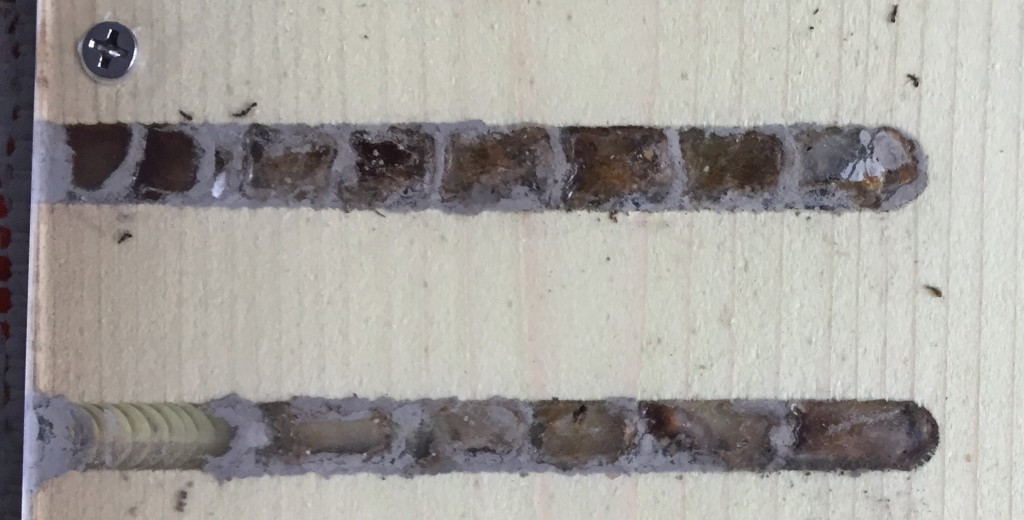You might find photos and instructions online for bee watering stations, usually rocks in a dish with water up to the surface of the rocks. According to Heather Holm, in an interview on the Native Plant Podcast, these are made for honey bees. She says that native bees don’t need them. In my opinion, they look difficult to keep clean. I occasionally find bees drowned in our bird bath or crawling down its slope edge, so maybe they do need an additional water source sometimes.
As a natural, and maybe safer, water source, I grow cup plant. Its’ leaves hold water after it rains or when dew collects in the morning. This video from the U.S. Fish and Wildlife Service shows cup plant and describes its broad wildlife value. One of my favourite blogs, A Garden in a City, shares a video of a Goldfinch eating seeds from cup plant. We enjoyed watching flocks of excited Goldfinches on our cup plants, as did bird-lovers walking past the pollinator garden. I haven’t yet seen any insects drinking from the leaf cups though.
Bees and butterflies use mud too
I was suprised to discover that bees, butterflies and other pollinators use mud. Cavity-nesting bees will use mud to build walls in their nests, and to cap the end of each nest when they’re finished laying eggs.

Some butterflies, especially males, will visit muddy spots to drink salts and minerals that later pass onto females when they mate. This behaviour is called ‘mud-puddling’. The jury is still out on whether do-it-yourself ‘puddles’ made with containers, rocks and sand actually work.
When we were building our pond, we had a small leak off the side of the stream, which created a muddy area for a few weeks. Large mud-dauber wasps visited to collect mud to build their nests. These large wasps are harmless, solitary and construct elaborate nests, which we never found.